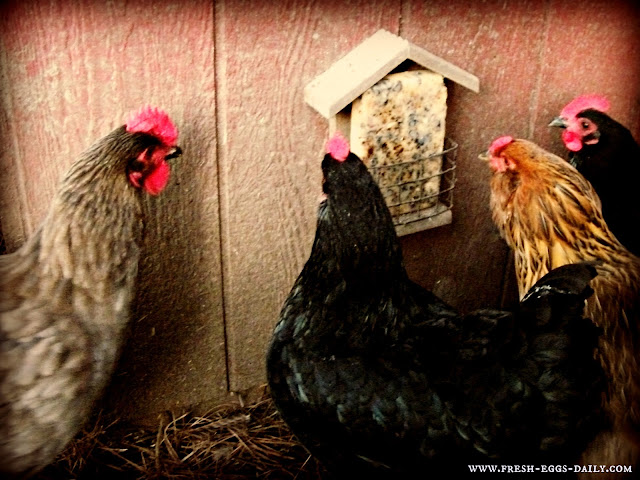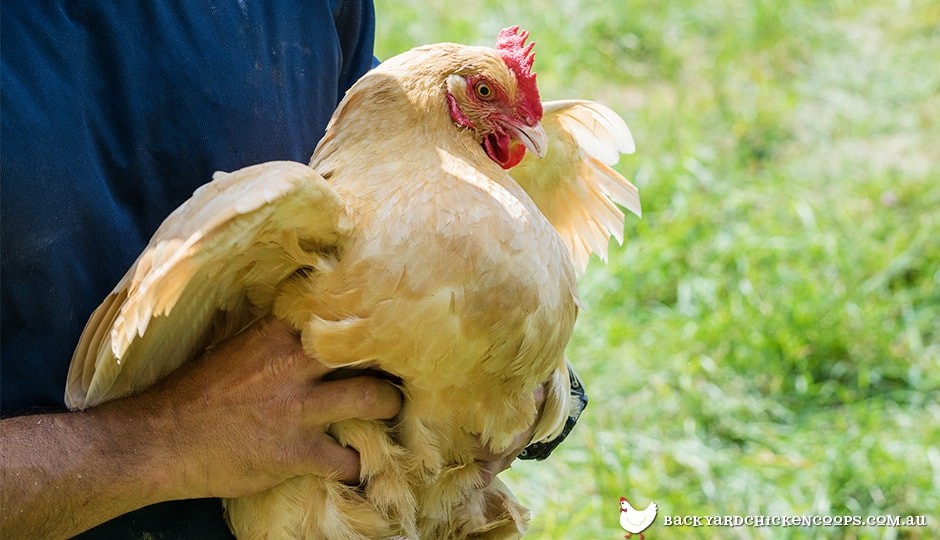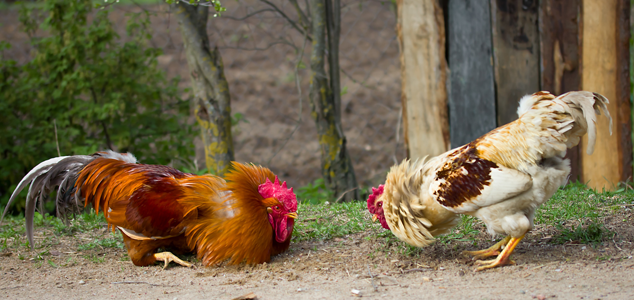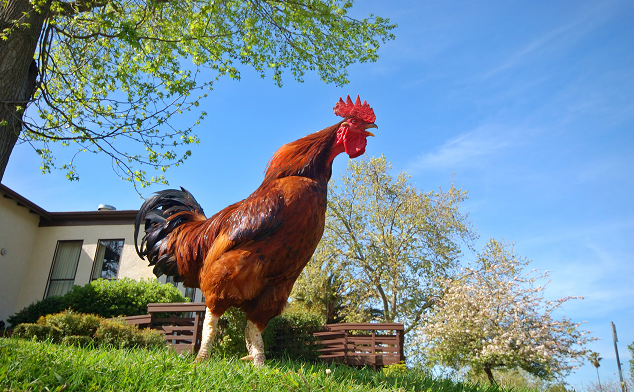10 Winter Boredom Busters for Chickens
Bored chickens are not happy chickens. Bored chickens tend to start pecking at each other and themselves, resulting in feather loss or worse.
Once a flock sees blood, it can whip the chickens into a frenzy and they will sometimes literally kill flock mates.... purely out of boredom and pecking order clashes.
Boredom can also lead to egg eating. Read more HERE about that nasty habit. I've never read anything to prove this next one, but I also think that boredom can result in more broodies being broody longer.
I mean, if there's nothing going on outside and no outdoor 'action' they feel left out of, why NOT just sit in a nesting box all day long?
Once a flock sees blood, it can whip the chickens into a frenzy and they will sometimes literally kill flock mates.... purely out of boredom and pecking order clashes.
Boredom can also lead to egg eating. Read more HERE about that nasty habit. I've never read anything to prove this next one, but I also think that boredom can result in more broodies being broody longer.
I mean, if there's nothing going on outside and no outdoor 'action' they feel left out of, why NOT just sit in a nesting box all day long?
Don't let this happen to your girls. It is the chicken equivalent of human cabin fever. But it's not 'normal' behavior and is easily prevented with proper flock management.
I have never had issues with pecking between our hens, other than the occasional rap on the head that says 'hey, remember your place in the pecking order!'
Boredom is more prevalent in the winter when there aren't weeds and grass to munch on, bugs to eat, butterflies to chase or dirt to bathe in and sun themselves.
Boredom pecking is more likely to happen if your coop and run are too small and the chickens don't have adequate space, so don't be stingy, let those girls have as large a run as possible, and try not to keepthem confined to their coop except on the most frigid, blizzard-y days.
I have never had issues with pecking between our hens, other than the occasional rap on the head that says 'hey, remember your place in the pecking order!'
Boredom pecking is more likely to happen if your coop and run are too small and the chickens don't have adequate space, so don't be stingy, let those girls have as large a run as possible, and try not to keepthem confined to their coop except on the most frigid, blizzard-y days.
Of course treats help keep chickens occupied (read HERE for some creative treat ideas), but too many treats aren't good for them, so here are some non-food ideas for keeping your chickens busy during the long, cold winter months.
Chickens LOVE to hop up on things and get a 'bird's eye' view. Especially when it's muddy or snowy, but really any time, a chicken will generally seek high ground if possible.
Outdoor roosts can keep them occupied, if not for hours, for at least a little while!
You can use boards, branches, ladders, any variety of things to create a multi-leveled chicken jungle gym of sorts. Or you can get really ambitious and make your girls a swing out of a log.
2. Stumps to Stand On
An added bonus, if you move the stumps periodically or turn them onto their other end, the chickens will have great fun finding the bugs the collect.
3. Piles of Leaves, Straw or Hay
Chickens HATE piles! They will scratch and kick whatever you give them until the pile is no more.
Great fun for the afternoon!
4. Hang a Mirror
Chickens, being the preeners that they are, have a great time looking at themselves in the mirror.
Trust me on this one.
It's well worth a trip to Goodwill to pick up a cheap mirror. Just be sure it's well secured so it can't be knocked over as the girls shove each other aside to check themselves out.
(One note: if you have a rooster, you might want to pass on the mirror - most roosters wouldn't take kindly to another roo in their flock!
5. Anything New and Different
The chickens will naturally come over to investigate.
6. Sheltered Dust Bath Area
If the chickens' regular bath area is covered in snow or mud, try setting up a bath in a sheltered area for them, even in a large tub or kiddie pool that you can put out for them on nice days.
7. Supervised Free Range
The chickens will appreciate being able to stretch their legs, as long as there are some bare patches on the ground where they don't have to walk in the dreaded white stuff!
Fresh air is good for you both! Just be super vigilant because predators are hungry and food sources are scarce this time of year.
8. Enlarge your Run
Give your chickens the largest area to roam that you possibly can so they have enough space to get away for some 'me' time once in awhile.
9. Spend More Time With Them
The more handing of them that you do, the easier it will be to catch and hold one when you NEED to due to illness or injury.
Also time spent with your chickens helps you understand the flock dynamic a bit better, identify any bullies (although with proper management bullies should never be a problem) and is just downright relaxing!
It's easy in the summer to spend time outdoors, but make it a point to bundle up and head to the coop for awhile each day all through the winter as well.
10. Pony Rides
 |
| ~photoshop magic courtesy Kate at Farmhouse38~ |
Okay, just kidding on the pony rides ! But kudos to Kate from Farmhouse38 and her photoshop magic for making this photo totally believable, right?
Okay, so how about ...
10. Seed and Suet Treats or a Lettuce Pinata

Homemade or commercial seed blocks or suet cakes cakes can help relieve winter boredom and also provide some extra nutrition and energy on cold days.
How about a Seed and Nut Wreath (pictured above)....
...or some Suet Cakes

How about a Seed and Nut Wreath (pictured above)....
...or some Suet Cakes

Make a Flock Block Knockoff

Hang treats in baskets for your chickens.
Winter crops such as kale, collards, cabbage and other leafy greens are often on sale through the winter and make a nutritious, fun treat.






























